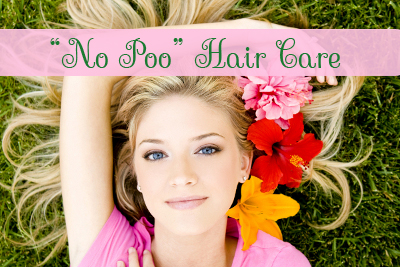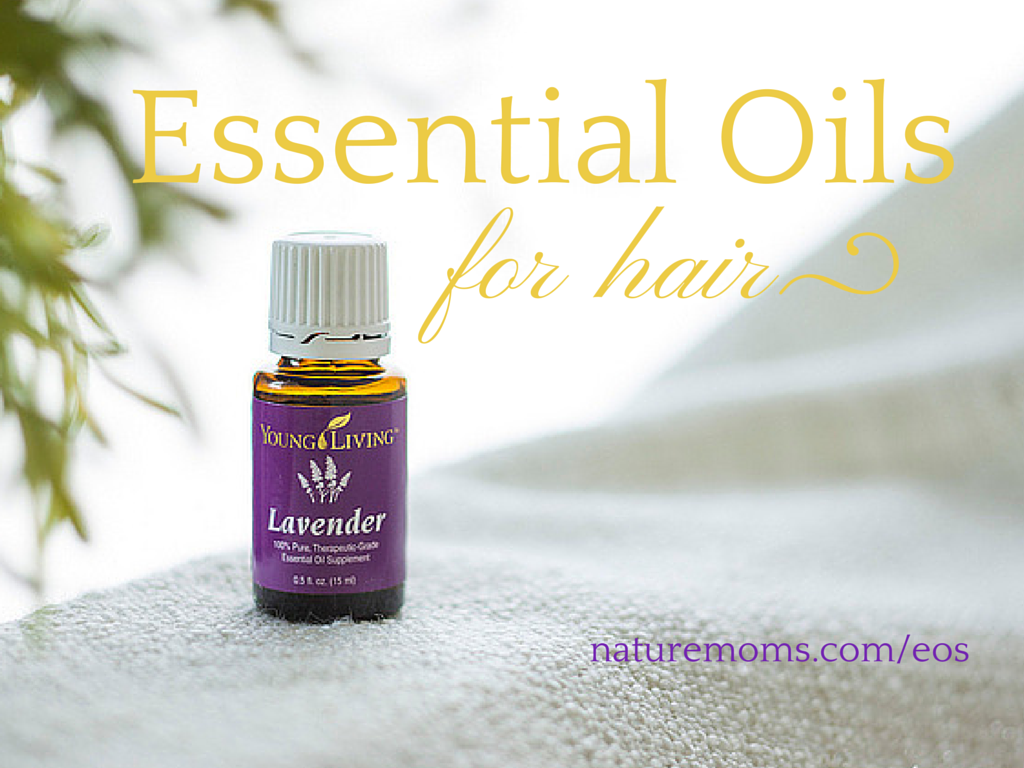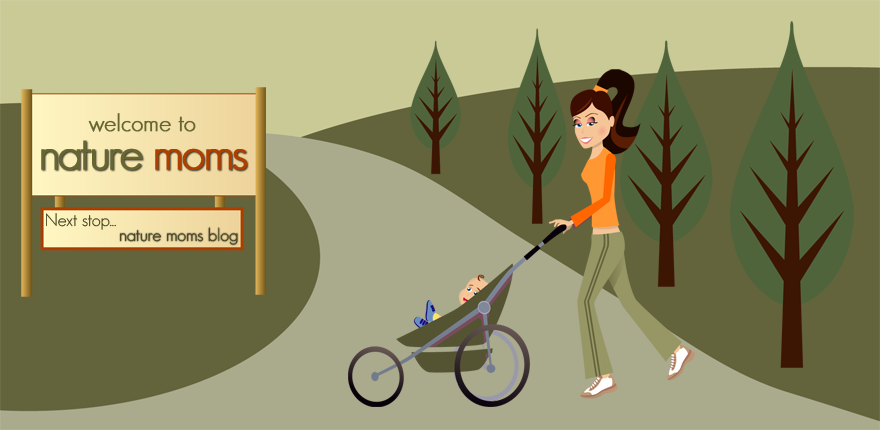The No Shampoo Alternative - No Poo
Eww!! You,
Like, Don’t Use Shampoo!
Why You Should
Go No 'Poo
By Christi Colvin
 Almost three
months ago, I was introduced to the idea of no longer using shampoo.
I was intrigued. After looking into it somewhat, I figured I didn’t
have anything to lose. So I picked up some baking soda and apple
cider vinegar and then took the plunge.
Almost three
months ago, I was introduced to the idea of no longer using shampoo.
I was intrigued. After looking into it somewhat, I figured I didn’t
have anything to lose. So I picked up some baking soda and apple
cider vinegar and then took the plunge.

I love the results! There was an adjustment period where I had to
play around with the measurements a bit but I finally got the hang
of it. I have straight-as-a-board, baby-fine hair that has never
held a “do.” After “no 'poo,” I don’t even have to use styling
products. I just blow dry and go; my hair now keeps any style. It’s
awesome!
Reality
Check
You’re thinking you could never do without shampoo, that your hair
would be a big oily mess — but it’s quite the opposite. It's a
supply and demand relationship, much like nursing a baby. The more
your baby wants to nurse, the more milk your body produces. If you
suddenly stopped nursing your baby there would be a lot of excess
milk, engorgement, etc., for a while until your body returned to a
state of balance.
The oily
secretions of our body are very much the same. The more we strip
away the natural oils, the more demand we are creating and the more
oils our bodies will make. So if you stop using the surfactants cold
turkey, your body will still be overproducing oil and there will be
a lot of oil until your body reaches a balance again.
Do it for
Your Health
The main reason to go no 'poo is your health. The number of
chemicals in shampoo and other bath and body products is
frightening. Your skin is the largest organ on your body. Whatever
gets put on your skin gets absorbed into your body, into your
bloodstream and into your organs, as has been proven by many
studies. Essentially, whatever is toxic to put in your mouth is
toxic on your skin as well.
According to
Jacqueline Krohn, M.D., in
The Whole Way to Natural Detoxification: The
Complete Guide to Clearing Your Body of Toxins
by Jacqueline Krohn, MD, "Caustic chemicals, such as alkaline
solutions, can also penetrate the skin. Once a chemical has
penetrated the stratum corneum (the most superficial layer of skin),
it moves through the epidermis and into the dermis. Then the rich
blood supply of the dermis readily transports the chemical into the
bloodstream."
Chemical Content of
Shampoo
Following are just a small sample of the toxins found in most
shampoos and their detrimental side effects.
Alcohol,
isopropyl (SD-40) is a very drying and irritating
solvent and dehydrator that strips your skin’s moisture and natural
immune barrier, making you more vulnerable to bacteria, molds and
viruses. It is made from propylene, a petroleum derivative, and is
found in many skin and hair products, fragrances, antibacterial hand
washes as well as shellac and antifreeze. It can act as a “carrier,”
accelerating the penetration of other harmful chemicals into your
skin.
It may promote
brown spots and premature aging of skin.
A Consumer’s Dictionary of Cosmetic Ingredients says
isopropyl alcohol may cause headaches, flushing, dizziness, mental
depression, nausea, vomiting, narcosis, anesthesia and coma. A fatal
ingested dose is one ounce or less.
FD&C color pigments are synthetic colors made from coal tar,
containing heavy metal salts that deposit toxins onto the skin,
causing skin sensitivity and irritation. Absorption of certain
colors can cause depletion of oxygen in the body and death. Animal
studies have shown almost all of them to be carcinogenic.
Mineral oil
is a petroleum by-product that coats the skin like plastic, clogging
the pores. It interferes with skin’s ability to eliminate toxins,
promoting acne and other disorders.
Propylene
glycol (PG) and butylene glycol are petroleum
plastics which act as surfactants (wetting agents and solvents).
They easily penetrate the skin and can weaken protein and cellular
structure. Commonly used to make extracts from herbs, PG is strong
enough to remove barnacles from boats!
Sodium
lauryl sulfate (SLS) and sodium laureth sulfate (SLES)
are detergents and surfactants that may pose serious health threats.
They are used in car washes, garage floor cleaners and engine
degreasers — and in 90 percent of personal care products that foam.
Animals exposed to SLS experienced eye damage, depression, labored
breathing, diarrhea, severe skin irritation and even death.
How to No 'Poo
Dissolve about 1 tablespoon of baking soda in just enough water to
make a paste. Apply this to your roots only; work it in and let it
sit for a minute.
In order to stimulate blood flow, clean your pores and get off built
up grime, use your finger tips to scrub your scalp. Start by making
a circle on the top of your head in the area you’d wear a crown.
Focus on the back of this circle to begin with. Next, fill in the
circle. This is where your part will be; grease here affects the way
your hair looks. Trace while still scrubbing with your fingertips
around the bottom edge of the circle. Keep making scrubbing circles
underneath each one, drawing lines in circles around your head.
Lastly, scrub the
back of your skull and your temples/sideburns. This will result in
less grease and more growth. After doing this, your scalp will feel
alive. Many women swear their hair grows faster after a visit to the
salon — it does, and this massage method is why.
When scrubbing, you’re actually rubbing your fingers back and forth
in short movements. Be gentle; you don’t want to break your hair.
Next, pour about 2 tablespoons of apple cider vinegar into a cup and
add water. (I keep two plastic 12-ounce cups in my shower and just
mix when I get in.) After you rinse the baking soda out, pour the
apple cider vinegar over the ends of your hair, let it sit for a
minute and then rinse it out. That’s all there is to it!
No 'Poo Troubleshooting
Remember, there is a transition period from two weeks to two months
depending on the person. Here are a few tips:
• If your hair
becomes frizzy, try using less baking soda or leaving it on for a
shorter period of time. Adding honey may also help.
• If your hair becomes greasy, try using less apple cider vinegar,
switching to lemon or lime juice, leaving out the honey, and/or
using a comb instead of a brush. Also, make sure you’re applying the
apple cider vinegar just to the ends of your hair.
• If your scalp itches, try the following
essential oils; tea tree,
lavender, rosemary. If your hair becomes dry, try a tiny bit of oil
(any oil, I use olive) smoothed on bottom of hair.
Ready to make the
change? Sure! Don’t be afraid to go no 'poo. You know how to do it!
Enjoy the journey – you’re on your way to a healthier you!

© Christi Colvin is a certified labor assistant and photographer
with one three wonderful children and a stellar husband. Find her at
http://www.christicolvin.net/
See also:
Natural Skincare
Recipes | Natural Hair Dye
Ingredients |
Organic Bath and Beauty
Products
Natural Hair Care:

